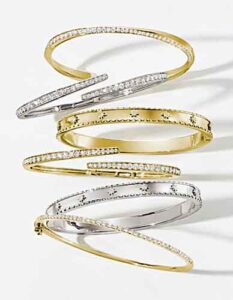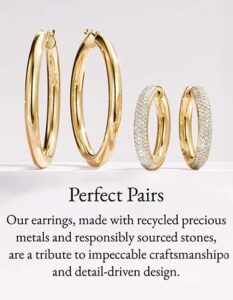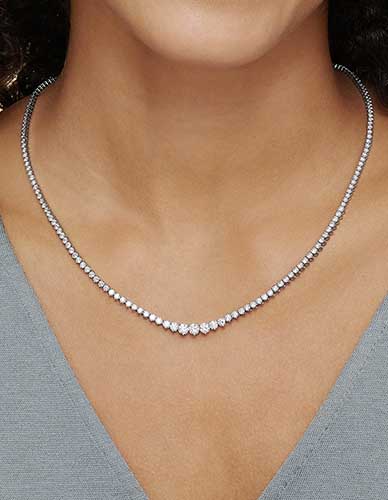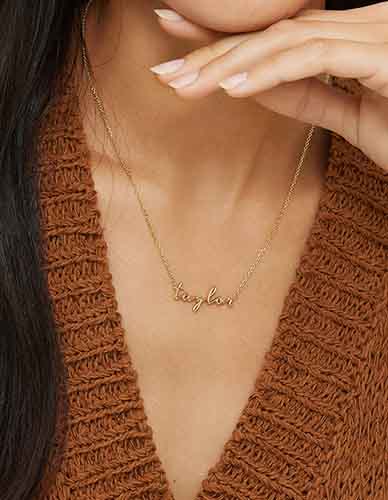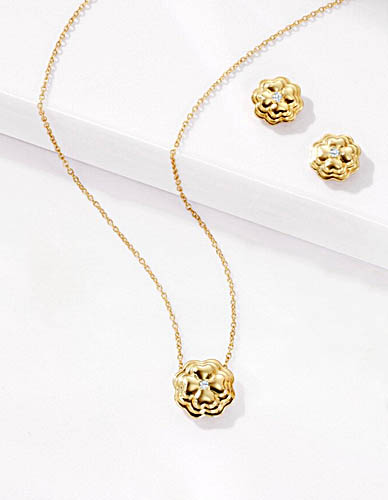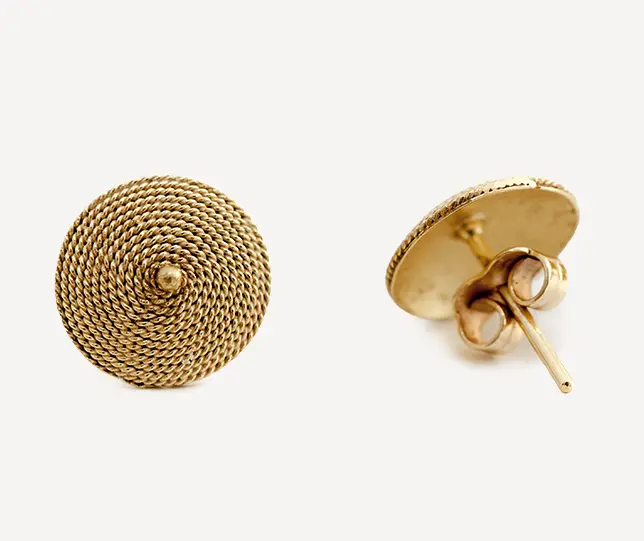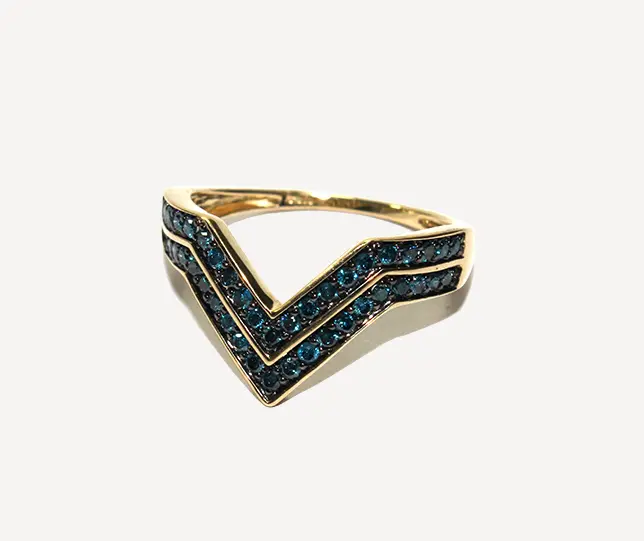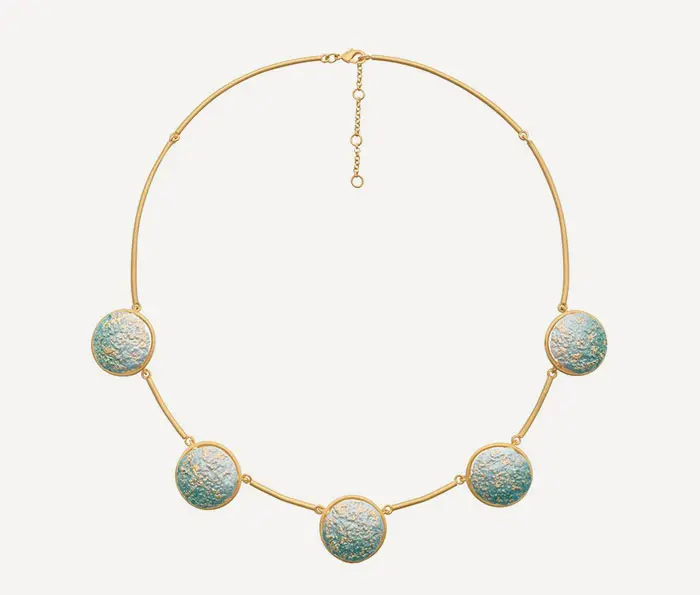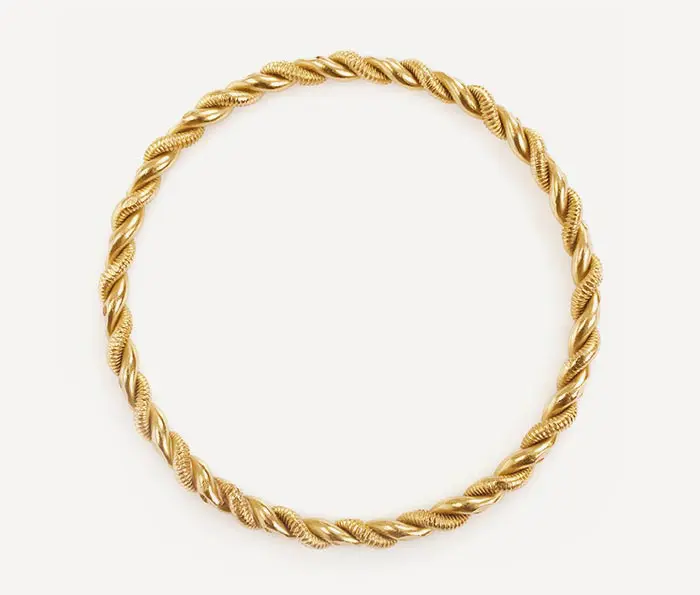Precious Metals Guide
When choosing a precious metal for jewelry, it's important to consider both form and function – not only personal style, but also factors such as durability and skin sensitivity.
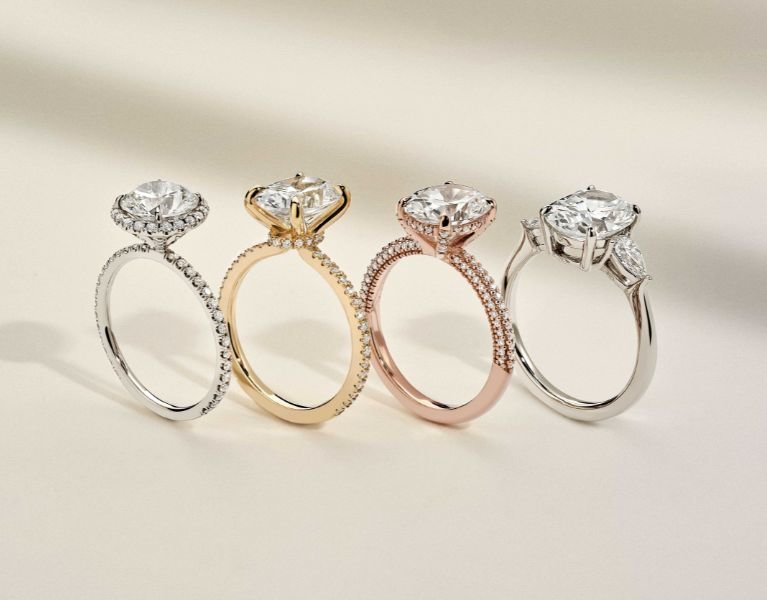
What are precious metals?
When choosing a precious metal for jewelry, it’s important to consider both form and function – not only personal style, but also factors such as durability and skin sensitivity.
What are precious metals?
Precious metals include gold, silver and platinum, while base metals include iron, copper, nickel, aluminum, and zinc. Precious metals are considered high value due to their rarity and relative durability.
Platinum vs. Gold vs. Silver
The main differences between platinum, silver and gold are purity, color, and price. Learn about the composition, appearance, durability, cleaning & care, and skin sensitivity factors to consider for each precious metal.
Platinum
Composition: Platinum is a mixture of 95% pure platinum and 5% alloys (ruthenium/iridium). Platinum is considered the rarest of metals, and therefore tends to have a higher price than other precious metals.
Appearance: Platinum is a lustrous silvery-white metal.
Durability: Platinum is a dense and durable metal that maintains its color for a lifetime. Over time, the surface of platinum will develop a soft matte layer called a patina.
Cleaning & Care: To properly clean platinum, use warm water, mild dish soap (avoid harsh chemicals), a soft brush, and dry thoroughly. At Brilliant Earth, platinum can be refurbished for a fee of $150 to polish and restore its shine.
Skin Sensitivity: Platinum is hypoallergenic, making it a safe option for those with metal allergies.
Recommendation: Consider platinum if you love the sleek look of this rare precious metal or have a metal allergy.
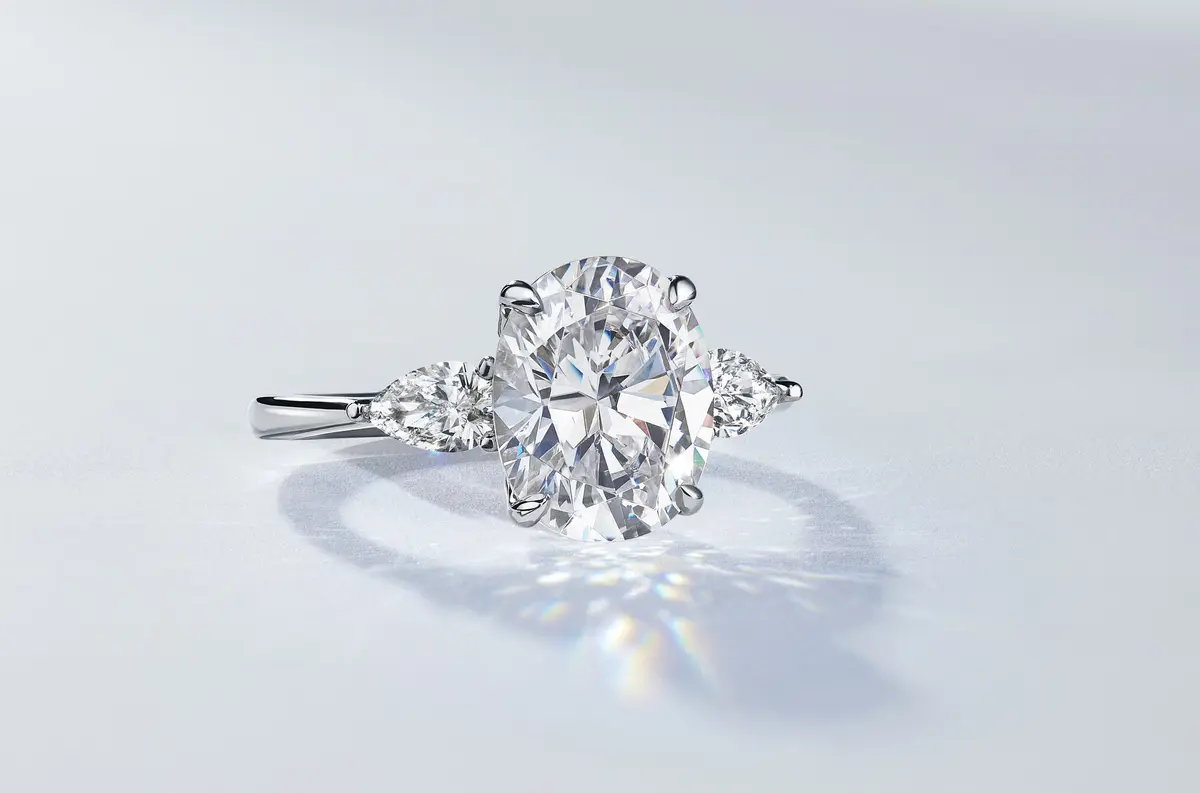

Platinum
Composition: Platinum is a mixture of 95% pure platinum and 5% alloys (ruthenium/iridium). Platinum is considered the rarest of metals, and therefore tends to have a higher price than other precious metals.
Appearance: Platinum is a lustrous silvery-white metal.
Durability: Platinum is a dense and durable metal that maintains its color for a lifetime. Over time, the surface of platinum will develop a soft matte layer called a patina.
Cleaning & Care: To properly clean platinum, use warm water, mild dish soap (avoid harsh chemicals), a soft brush, and dry thoroughly. At Brilliant Earth, platinum can be refurbished for a fee of $150 to polish and restore its shine.
Skin Sensitivity: Platinum is hypoallergenic, making it a safe option for those with metal allergies.
Recommendation: Consider platinum if you love the sleek look of this rare precious metal or have a metal allergy.
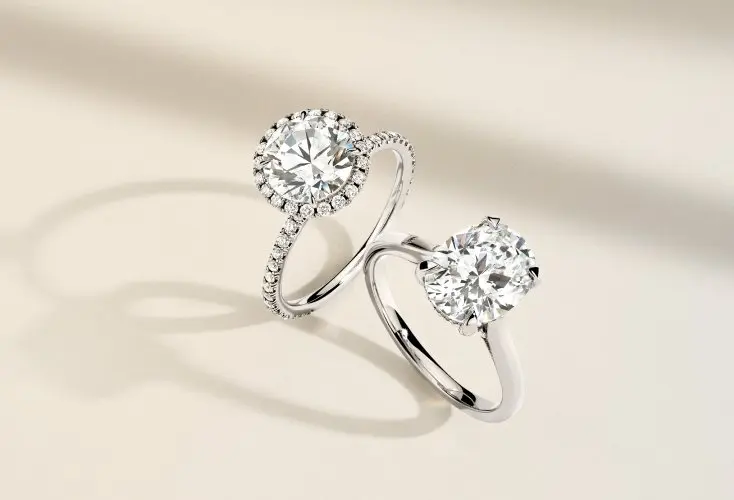
White Gold
Composition: The composition of white gold is 75% gold and 25% alloys, which include nickel. White gold gets its signature color from the plating added to the ring called rhodium.
Appearance: Similar silvery appearance to platinum, with a mirrored finish and white hue.
Durability: White gold is very durable. In order to maintain a bright, white finish, 18K white gold must be re-rhodium plated periodically, depending on wear and tear.
Cleaning & Care: Use warm water, mild dish soap, a soft brush, dry thoroughly and avoid harsh chemicals when cleaning white gold.
Skin Sensitivity: Due to the presence of nickel in the alloy, white gold is not recommended for those with a nickel allergy.
Recommendation: White gold is recommended for those without nickel allergies, and who prefer a metal that maintains its shine versus the look of a patina.
Yellow Gold
Composition: 18K yellow gold is alloyed with 25% copper and zinc. 24K yellow gold is not alloyed and is 100% pure gold.
Appearance: With its rich hue, yellow gold has a distinct and timeless look.
Durability: 18K yellow gold is more durable due to its alloy content. Normal wear considerations apply, so any yellow gold pieces should be removed during activities where they may endure pressure or impact.
Cleaning & Care: Gold is naturally yellow, therefore the color of one’s ring will remain consistent over its life and does not need routine maintenance. When cleaning yellow gold, use warm water, mild dish soap, a soft brush, dry thoroughly, and avoid harsh chemicals.
Skin Sensitivity: Skin reactions to the alloys in 18K yellow gold (copper and zinc) are uncommon.
Recommendation: Consider yellow gold for a timeless look. Brilliant Earth offers ethically sourced Fairmined gold as part of its Fairmined Collection.
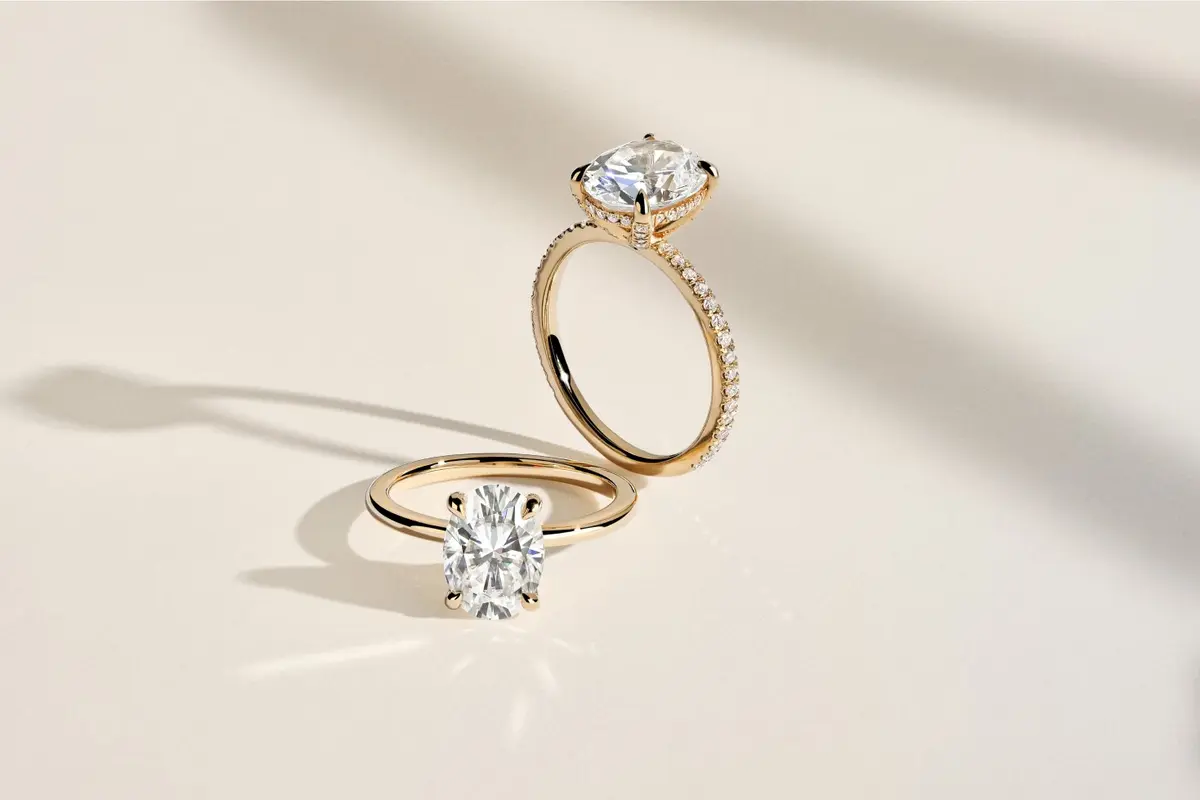

Yellow Gold
Composition: 18K yellow gold is alloyed with 25% copper and zinc. 24K yellow gold is not alloyed and is 100% pure gold.
Appearance: With its rich hue, yellow gold has a distinct and timeless look.
Durability: 18K yellow gold is more durable due to its alloy content. Normal wear considerations apply, so any yellow gold pieces should be removed during activities where they may endure pressure or impact.
Cleaning & Care: Gold is naturally yellow, therefore the color of one’s ring will remain consistent over its life and does not need routine maintenance. When cleaning yellow gold, use warm water, mild dish soap, a soft brush, dry thoroughly, and avoid harsh chemicals.
Skin Sensitivity: Skin reactions to the alloys in 18K yellow gold (copper and zinc) are uncommon.
Recommendation: Consider yellow gold for a timeless look. Brilliant Earth offers ethically sourced Fairmined gold as part of its Fairmined Collection.
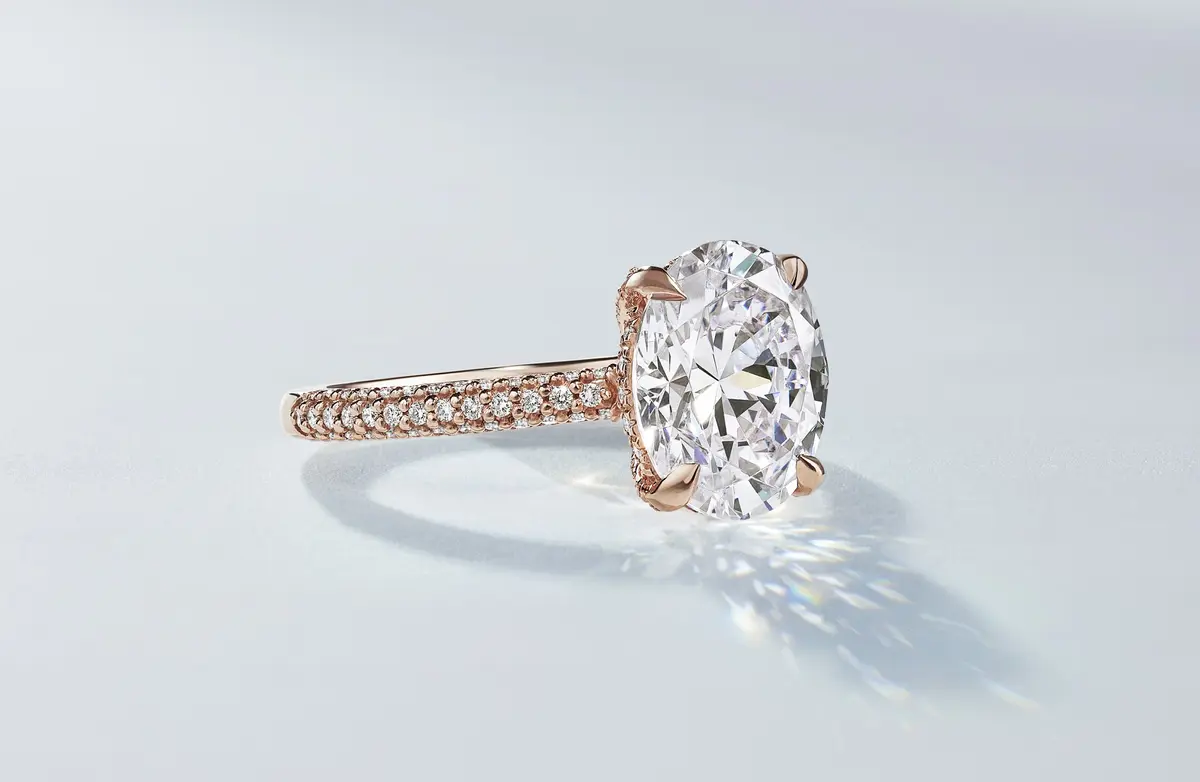
Rose Gold
Composition: 14K rose gold is alloyed with approximately 40% copper to get the beautiful rosy, pink hue.
Appearance: Known for its blush tone, rose gold makes a bold statement.
Durability: Normal wear considerations apply, so any rose gold pieces should be removed during activities where they may endure pressure or impact.
Cleaning & Care: Since rose gold’s color comes from the alloy combination as opposed to a plating, rose gold does not require re-plating or routine maintenance. When cleaning rose gold, use warm water, mild dish soap, a soft brush, dry thoroughly, and avoid harsh chemicals.
Skin Sensitivity: Skin reactions to copper, the alloy in rose gold, is uncommon.
Recommendation: Rose gold is recommended for a stylish flair.
Silver
Composition: Sterling silver is always referred to as “925,” which indicates that it is comprised of 92.5% silver, and 7.5% alloys. True sterling silver is stamped with 925 or SS.
Appearance: Silver has a grayish-white hue with a more reflective color than white gold.
Durability: Silver is softer than white gold, due to the lower levels of alloys.
Cleaning & Care: Sterling silver may tarnish or dull when exposed to oxygen and humidity. When possible, keep your silver in an air-tight container. To remove tarnish and keep your silver bright, gently rub the piece with a jewelry cleaning cloth. Then rinse the silver thoroughly in warm water and dry it carefully. More extensive tarnish can be removed with liquid silver cleaner or by a jeweler. Chlorine and bleach accelerate tarnishing and should be avoided. When silver is close to your skin it helps to slow down the tarnishing process—and even gives it a bit of self-polish.
Skin Sensitivity: Brilliant Earth offers silver that has been alloyed with copper and zinc instead of nickel, making it perfect for those with nickel allergies.
Recommendation: Silver offers a reflective, sleek, and slightly more affordable alternative to platinum.
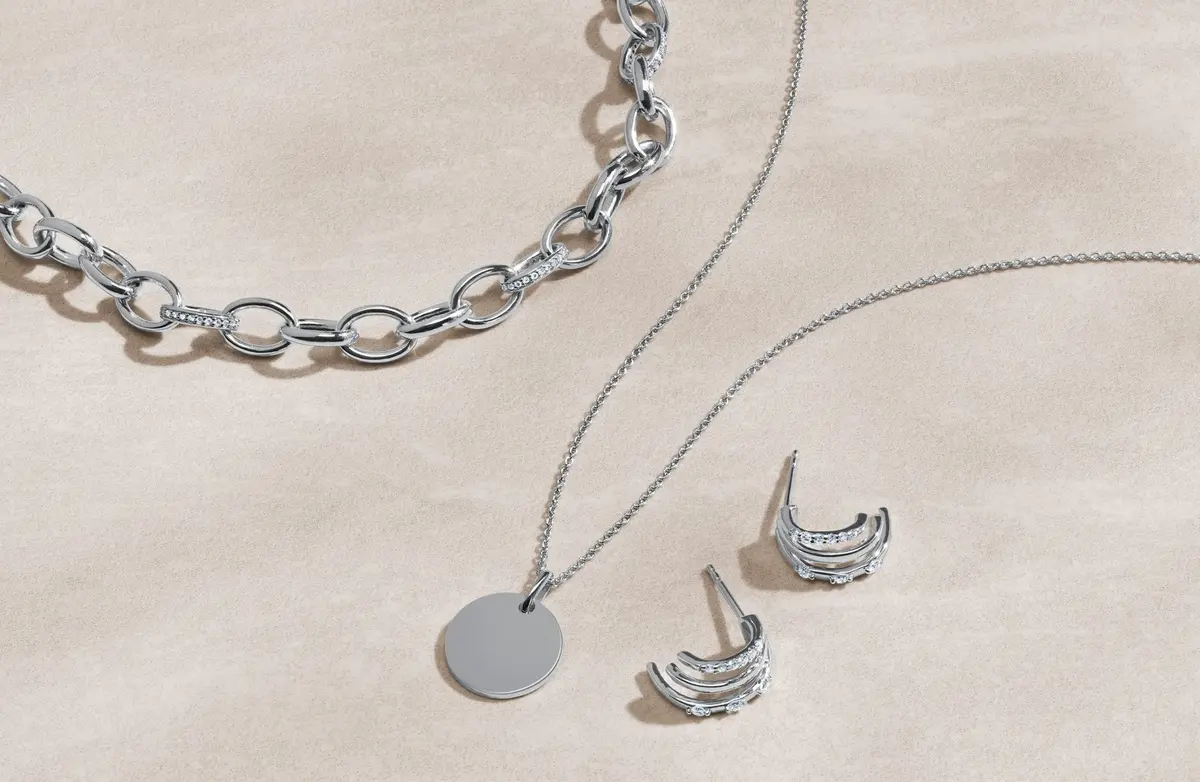

Silver
Composition: Sterling silver is always referred to as “925,” which indicates that it is comprised of 92.5% silver, and 7.5% alloys. True sterling silver is stamped with 925 or SS.
Appearance: Silver has a grayish-white hue with a more reflective color than white gold.
Durability: Silver is softer than white gold, due to the lower levels of alloys.
Cleaning & Care: Sterling silver may tarnish or dull when exposed to oxygen and humidity. When possible, keep your silver in an air-tight container. To remove tarnish and keep your silver bright, gently rub the piece with a jewelry cleaning cloth. Then rinse the silver thoroughly in warm water and dry it carefully. More extensive tarnish can be removed with liquid silver cleaner or by a jeweler. Chlorine and bleach accelerate tarnishing and should be avoided. When silver is close to your skin it helps to slow down the tarnishing process—and even gives it a bit of self-polish.
Skin Sensitivity: Brilliant Earth offers silver that has been alloyed with copper and zinc instead of nickel, making it perfect for those with nickel allergies.
Recommendation: Silver offers a reflective, sleek, and slightly more affordable alternative to platinum.
How to Tell the Difference Between Platinum, White Gold, and Silver Jewelry
Platinum, white gold and silver are all similar in appearance, yet have subtle differences. Platinum has a naturally white, and bright hue, while white gold’s appearance has a creamier color with a yellow undertone and mirror-like finish. Silver has a gray-white color, with a naturally duller cast and true sterling silver is stamped with 925 or SS.
14K White Gold is stamped with 14KW, 18K White Gold with 18KW, Platinum with PT, 14K Rose Gold with 14KR, 14K Yellow Gold 14KY and 18K Yellow Gold with 18KY. The only true verification of whether a precious metal is platinum, white gold or silver is through a reputable jeweler’s test.
Gold Vermeil vs. Gold Plated vs. Gold Filled
Learn about the differences among gold vermeil, gold-plated and gold-filled jewelry, comparing appearance, durability, cleaning and care as well as skin sensitivities.
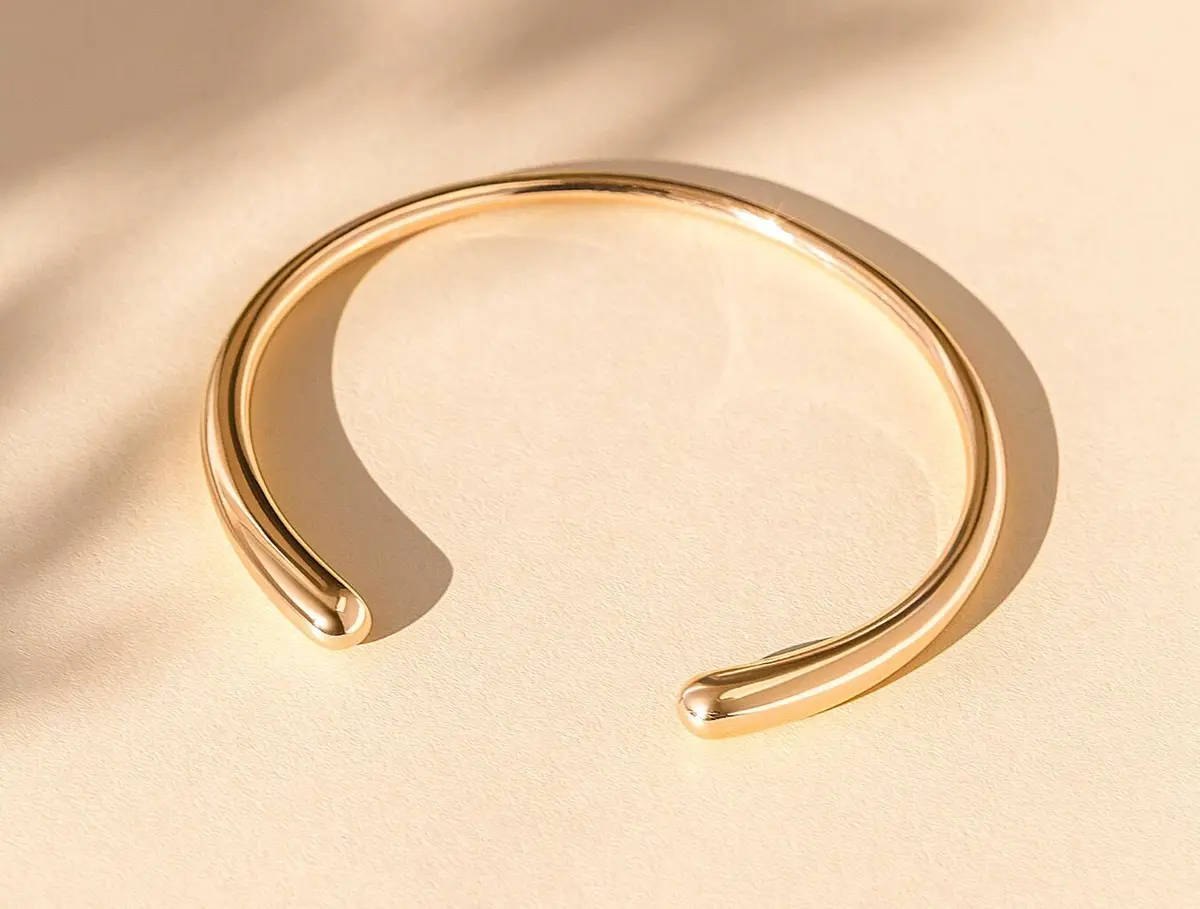
Gold Vermeil
Composition: Vermeil is a style of gold plating also known as silver gilt. Vermeil jewelry must have a sterling silver base with a coating of gold laid over the top. Brilliant Earth’s vermeil is 14K gold that is a minimum of 2.5 microns thick.
Appearance & Durability: Thicker layers of gold make gold vermeil more resistant to signs of wear, so gold vermeil retains its shine and resists tarnish if cared for properly.
Cleaning & Care: To care for your vermeil pieces, remove vermeil jewelry before showering or swimming in chlorine or salt water or participating in activities that will cause you to sweat. It is always best to remove vermeil jewelry before applying makeup, lotion, perfume, (or hand sanitizer). Store it where it won’t rub against other hard surfaces. To clean, gently wipe with a soft, dry cloth.
Skin Sensitivity: Typically, gold vermeil is hypoallergenic.
Gold-Plated
Composition: Gold-plated jewelry has a gold layer at a minimum of .5 microns of gold which is adhered to copper or brass base metals.
Appearance & Durability: The plating is more prone to damage from wear and tear as compared to gold-filled and gold vermeil.
Cleaning & Care: As gold-plated jewelry is less resistant to wear and tear due to the thin layer of plating, it’s recommended to remove it before showering or swimming in chlorine or salt water, or participating in activities that will cause you to sweat. It’s also important to remove gold-plated jewelry before applying makeup, lotion, perfume, or hand sanitizer. Store it where it won’t rub against other hard surfaces. To clean, gently wipe with a soft, dry cloth.
Skin Sensitivity: Metals used in gold-plated jewelry might cause irritation.
Brilliant Earth does not carry gold-plated jewelry.
Gold-Filled
Composition: Gold-filled jewelry consists of gold mechanically, soldered or welded to the base metal, often copper or brass. Gold-filled jewelry must contain 5% gold by weight.
Appearance & Durability: Due to the higher content of gold, gold-filled jewelry retains its quality for a longer period of time.
Cleaning & Care: It is recommended to remove gold-filled jewelry before showering or swimming in chlorine or salt water and participating in activities that will cause you to sweat. It’s also important to remove gold-plated jewelry before applying makeup, lotion, perfume, or hand sanitizer. Store it where it won’t rub against other hard surfaces. To clean, gently wipe with a soft, dry cloth.
Skin Sensitivity: Typically, gold-filled jewelry is hypoallergenic.
Brilliant Earth does not carry gold-filled jewelry.
How to Recycle Gold & Platinum Jewelry
Brilliant Earth offers a recycling program for gold and platinum jewelry, both from Brilliant Earth and for your personal items, in exchange for shopping credit. You can drop your jewelry off at one of our showrooms or ship directly to the Brilliant Earth distribution center. To ship to the distribution center, please contact us and we will send you a shipping label and instructions.
FAQ's
Karat is defined as a measurement of the purity of gold. Below are details on gold percentages for all karats. As a note, these percentages do vary slightly from jeweler to jeweler.
- The highest karat gold is 24 karat (24K) gold, as it is pure gold alloyed with no other metals.
- 18 karat (18K) gold is crafted with 75% pure gold and 25% other alloys.
- 14 karat (14K) gold is crafted with 58.3% pure gold and 41.7% other alloys.
- 10 karat (10K) gold is usually the least pure gold on offer for anything considered to be ‘gold jewelry.’ It features 41.7% pure gold and 58.3% other metals.
The highest karat gold is 24 karat (24K) gold, as it is pure gold alloyed with no other metals. This means that it has zero impurities and is usually softer than lower karats—10K and 14K.
There are many different karat levels of gold. The higher the karat, the fewer other metals added to it during the refining process. 24K use in wedding bands and other jewelry is limited because its softness means that it can’t hold fine details like subtle curves on intricate designs. Thus, 10K gold is the most durable, containing 41.7% pure gold.
For rings that are worn every day and need to be as durable as possible, the highest karat recommended would be 18K. Necklaces and earrings can be crafted in 24K as they are less exposed to wear and tear.
The different karats of gold also have different hues based on the amount of gold content. 18K Yellow Gold is often a much more deeply saturated yellowish green color often referred to as ‘buttery’, whereas 14K gold is a much lighter, more subtle hue of gold.
The only true verification of real gold is through a reputable jeweler’s test.
For quick reference, any real gold should be stamped with its karat measurement (usually 10K, 14K, or 18K). But remember, a stamp doesn’t fully prove a piece’s authenticity, so it’s always best to get the jewelry tested through a reputable jeweler.
Colored gold refers to any gold that has been surface-treated or alloyed with other elements such as silver, copper, or intermetallic compounds.
How can you fix tarnished gold?
Tarnished gold can be cleaned with gentle home cleaning techniques using dish soap or toothpaste. For highly valuable or severely tarnished gold jewelry, a professional process is recommended, either through a brand’s refurbishment service or a jeweler.
- White Gold: Like with platinum, prepare a cleaning solution by mixing soap and warm water. Do not use detergents that contain chlorine, ammonia, or other harsh chemicals. Many common cleaning products can accelerate wear on white gold’s rhodium plating, so be careful or avoid these altogether when wearing a white gold ring.
- Yellow Gold: Because yellow gold is more durable than white gold, mild chemicals such as ammonia can be used to clean yellow gold. Remember that gold is a soft metal, so be gentle during the brushing and polishing processes.
- Rose Gold: Rose gold can be cleaned using the same methods as yellow gold using lukewarm water and mild dish soap.
With proper care, cleaning and storage, gold vermeil can last for years.
Minimal tarnish can be remedied with gentle cleaning methods; however, the oxidation process happens every time the jewelry is worn, eventually causing discoloration. Other elements including natural oil from the skin as well as dirt, dust and chemicals from lotions also contribute to tarnishing.
Rose gold is real gold because its main component is pure yellow gold.
Patina on precious metals refers to the change in finish and texture that develops over time due to normal wear. The patina on platinum may appear satiny or slightly frosted finish, although it can vary in color.
The best precious metal for your engagement ring is the one that perfectly suits your style, budget and lifestyle. When selecting a precious metal for your engagement ring, it’s important to keep in mind how the patina may develop over time.
Gold and platinum are the most valuable precious metals typically used in fine jewelry.
Gold and platinum are the highest-priced precious metals typically used in fine jewelry.
The 40% copper alloy gives rose gold its beautiful rosy pink hue.
Sterling silver must be stamped 925 or SS, which indicates that it is comprised of 92.5% silver, and 7.5% alloys. Fine or 99.9% pure silver is not suitable for jewelry intended for long-term wear because it is too soft and malleable.
Brass is considered a base metal. Precious metals include sterling silver, gold, and platinum.
Platinum, gold, and nickel-free sterling silver are typically hypoallergenic.
Pendants and earrings in 24K gold will typically last for a long time; however, rings that are worn every day should be in 18K gold or lower.
The difference between each Karat is the percentage of pure gold versus alloys in each.
- 18 karat (18K) gold is crafted with 75% pure gold and 25% other alloys.
- 14 karat (14K) gold is made up of 58.3% pure gold and 41.7% other alloys.
- 10 karat (10K) gold has 41.7% pure gold and 58.3% other metals.
There are several ways to differentiate between gold and brass. Higher karat gold has a very yellow hue and is more resistant to tarnish, while brass reacts to oxidation and has a less vibrant color. Gold feels heavier than brass because it has a higher density.
Platinum and gold are typically the least resistant to tarnish.

